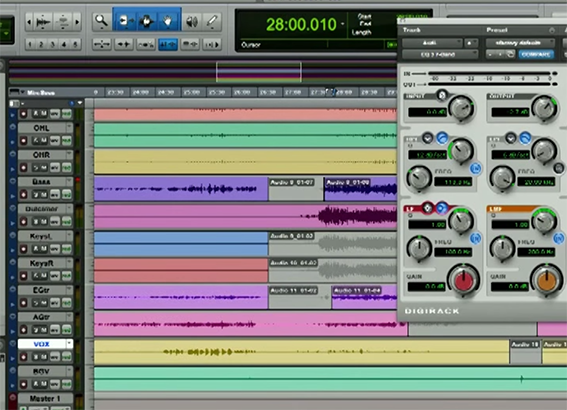
Then plot this mean SLA for longitude and for the whole time period. To plot such a diagram on the area (5°N-5°S, 135☎-75°W), select your time period (in the example the datasets go from the beginning of 1996 to the end of 1999), then compute the averaged SLA for latitude. In a Hovmöller diagram, SLA variations are plotted for time and longitude at a fixed latitude, which highlights the role of waves. Other diagrams, such as Hovmöller diagrams, can be useful.

Space and time features of planetary waves suggest another approach to their study, as plotting maps for each month, would be ineffective and tedious. One part of the Kelvin wave is deflected westwards: this is a Rossby wave, which propagates across the rise in thermocline at lower speeds (by a factor of approximately 3) than Kelvin waves. The resulting diagrams show the situation at successive monthly intervals: the maximum SLA values (i.e Kelvin waves) progress towards the South American coast and divide into two poleward Kelvin waves. In the same way as for November, plot SLA maps for December and January. Kelvin waves propagate eastwards in response to wind stress. These are known as Kelvin waves and Rossby waves. However, sea surface slope changes, in terms of space and time scales, involving planetary waves (ie those with long wavelengths, that can travel thousands of kilometres). It is now acknowledged that an El Niño event is caused by significant changes in wind stress it thus provides a good example of existing interactions between ocean and atmosphere. This gives an overview of El Niño’s distribution throughout the Equatorial Pacific Ocean during the month of November.įig 3: Monthly Mean of Maps of Sea Level Anomalies, El Niño area, during November 1997. Using only the fourth MSLA datasets available for November 1997, a new monthly mean map can be plotted (fig 3, simply re-enlarge the selected area to 30°S/30°N).
#Waves 9 tutorial series
Then, from summer 1998, sea surface height oscillations began again.įig 2: Temporal series of MSLAs in the El Niño areaįocusing on 1997 enables us to consider specifically the month of November as an indicator of El Niño’s intensity.

Moreover M’s value significantly increased in 1997 to over 25 cm: the signature of an occurring El Niño. The diagram shows periodic oscillations in M and illustrates the annual variability in sea surface heights.

No particular reprocessing of altimeter data is necessary in this case, so it is possible to use ready-made maps of Sea Level Anomalies. The El Niño event that occurred in 1997 was a good example of where satellite altimetry made a major contribution to monitoring such phenomenon. During an El Niño event, a few months before Christmas anomalous warm water accumulates off the coast of Peru.

El Niño is a climatic phenomenon occurring in the Pacific Ocean every two to ten years.


 0 kommentar(er)
0 kommentar(er)
